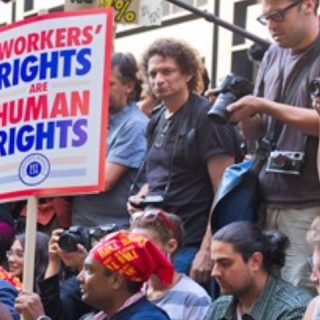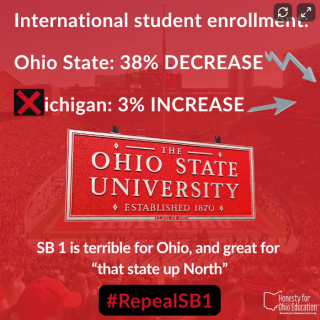The “Old Amateurs” of Columbus – also known as those who do most of the hard work in the community – have not been invited by City officials to take personal tours beginning this week of the “Zone In” gallery which opened downtown at 141 N. Front Street. The gallery offers an opportunity for the public to see and comment on the zoning overhaul which could radically change Columbus’s major corridors.
To the City’s credit, members of our LGBTQ+ community, recent immigrants, and the arts community have been invited (pictured above). But those at the head of the line for a personal tour are “Young Professionals,” who are coveted by “Zone In Columbus” considering they’re the few who will able to afford the tiny condos and apartments in the tall towers which “Zone In” will green light for high-end developers to build in Columbus’s major corridors.
“I guess normal everyday citizens aren’t considered stakeholders and aren’t worthy of special attention,” wrote former mayoral candidate Joe Motil who first posted the above graphic to Facebook. “And it looks like seniors and the disabled aren’t stakeholders either. So, instead City Council holds special hand shaking sessions for their friends so they can make sure they have their support, and they will spread the word for them.”
Allowing hardworking and longtime residents of Columbus to chart a course for their own neighborhoods is above their pay grade, apparently. And years of maintaining Clintonville as one of Central Ohio’s best neighborhoods must not matter to Mayor-In-Secret Michael Coleman who’s been obsessed with attracting Young Professionals to fill Columbus’s corporate cubicles for over two decades now.
“Zone In” is overhauling the zoning code for North High Street and Indianola Avenue in Clintonville to create more housing (i.e., more density). But where will the Young Professionals park their Teslas and Audis? On side streets because “Zone In” does not require developers to provide parking, and most privileged and well-to-do 20-to-30-somethings are never giving up their ride, meaning permit parking is most likely to expand way past downtown.
“Zone In” says creating more housing supply will rein in housing costs and create inclusiveness. Altruistic and much needed, but other Clintonville residents besides Motil have been posting to Facebook about what they have found in the small print of “Zone In,” and they say the City’s numbers on what is affordable is borderline delusional.
“Developers that make one-fifth of their units affordable to people earning 100 percent of area median income (AMI) could build even higher,” states one post the Clintonville Discussion Forum Facebook. “Columbus AMI for a family of three is $89,300 a year. That means ‘affordable’ rents could be $2,233 per month for a 2 BR. This isn’t affordable for half of our population. If we’re going to allow developers to make bigger profits off bigger buildings while giving them tax abatements, we should insist they build more housing that more people can actually afford.” ,
They added, “For example, instead of 100 percent AMI ‘affordability,’ it should be revised to 50 pecent AMI or lower.”
A revision the City will never make, believes Motil.
“Anyone who thinks adding more market rate housing in Clintonville will someday make it more affordable is clueless. The only possible affordable housing that will be created by this in Clintonville will be if a non-profit builds a multi-unit apartment building,” he told the Free Press.
Some Clintonville residents are okay with more density, as the debate continues on Facebook.
“New higher density housing is fine and needed, just hoping it fits in with the current neighborhood vibe and isn’t some slap dash ugly monstrosity sellout to developers. Hoping for some reasonable setback distance from the streets and architecture with a little character,” read one post.
“We need more housing. Clintonville is not a suburb and we need to stop acting like it. Building density along main roads is good for a neighborhood’s economy, local businesses, and overall accessibility of the area. Clintonville has become an unaffordable place to live,” stated another post.
But for every optimistic comment there appears to be two concerned comments.
“I am adamantly opposed to any of these ugly apartment buildings on what remains of residential High Street in the Whetstone area,” wrote one resident on Facebook. “I notice that the Mayor doesn’t include any of these where he lives.”
City Councilmember Rob Dorans is holding a public meeting May 16th at 7 pm at Whetstone Library to discuss the future of “Zone In” for Clintonville.



